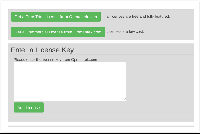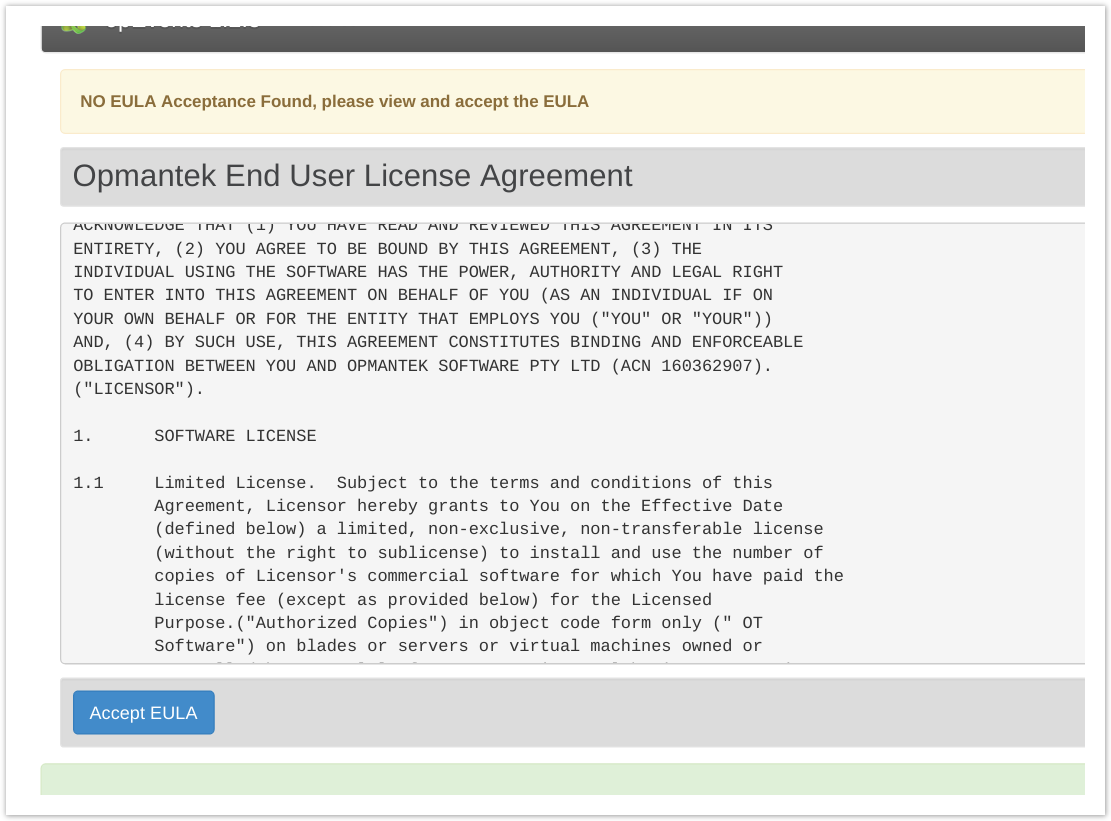...
Table of Contents maxLevel 1 exclude Prerequisites
Access the opConfig GUI and enter your license.
The opConfig GUI is accessible at http://<yourservername or ip address>/omk/opConfig/, or via the NMIS Modules dropdown. Paste the valid license text string into the box and then read and accept the End User Licence Agreement.
| Info |
|---|
neither the opConfig GUI nor the CLI tools will operate until the license is added and End User Licence Agreement is accepeted. |
Setup Cron to perform the desired opConfig data collection periodically.
Here is the default cron snippet we recommend using to start with, you will need this as a text file in /etc/cron.d/opConfig:
| Code Block |
|---|
...
| ||
# opConfig: hourly command set running |
...
1 * * * |
...
* root /usr/local/omk/bin/opconfig-cli.pl quiet=1 act=run_command_sets tags=HOURLY |
...
# and the daily ones |
...
7 7 * * * |
...
* root /usr/local/omk/bin/opconfig-cli.pl quiet=1 act=run_command_sets tags=DAILY |
...
# and a daily import from open-audit enterprise |
...
21 4 * * |
...
* root /usr/local/omk/bin/opconfig-cli.pl quiet=1 act=import_audit |
...
# and a daily purge of old revisions |
...
40 3 * * |
...
* root /usr/local/omk/bin/opconfig-cli.pl act=purge_revisions quiet=1 |
| Info |
|---|
If you are not familiar with how to create a text file you could do the following (their are lots of other ways to do it also): in you terminal session (as root) type "nano /etc/cron.d/opConfig" , then copy the above and paste the above text in, save the file with Ctrl+o , then exit with Ctrl + x. |
Configuration and Use
At this point opConfig should be ready for operation, but won't have any knowledge of which nodes to manage.
...
| Content by Label | ||||||||||||||||
|---|---|---|---|---|---|---|---|---|---|---|---|---|---|---|---|---|
|

